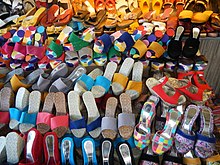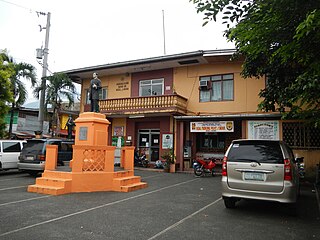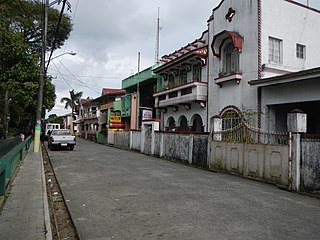Liliw | |
|---|---|
| Municipality of Liliw | |
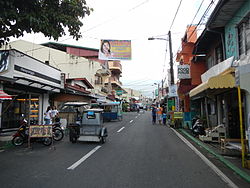 Downtown area | |
| Nickname: Flip-flops Capital of the Philippines [1] | |
| Motto(s): "Baleng Ganda, Baleng Saya" | |
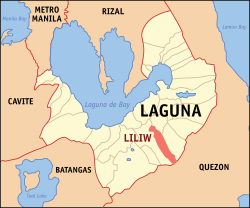 Map of Laguna with Liliw highlighted | |
Location within the Philippines | |
| Coordinates: 14°07′48″N121°26′10″E / 14.13°N 121.436°E | |
| Country | Philippines |
| Region | Calabarzon |
| Province | Laguna |
| District | 3rd district |
| Founded | August 29, 1571 |
| Barangays | 33 (see Barangays) |
| Government | |
| • Type | Sangguniang Bayan |
| • Mayor | Ildefonso D. Monleon |
| • Vice Mayor | Ericson J. Sulibit |
| • Representative | Loreto S. Amante |
| • Municipal Council | Members |
| • Electorate | 25,875 voters (2022) |
| Area | |
| • Total | 39.10 km2 (15.10 sq mi) |
| Elevation | 256 m (840 ft) |
| Highest elevation | 2,173 m (7,129 ft) |
| Lowest elevation | 13 m (43 ft) |
| Population (2020 census) [4] | |
| • Total | 39,491 |
| • Density | 1,000/km2 (2,600/sq mi) |
| • Households | 10,706 |
| Economy | |
| • Income class | 4th municipal income class |
| • Poverty incidence | 2.06 |
| • Revenue | ₱ 137.5 million (2020) |
| • Assets | ₱ 286.8 million (2020) |
| • Expenditure | ₱ 114.1 million (2020) |
| • Liabilities | ₱ 132.1 million (2020) |
| Service provider | |
| • Electricity | Manila Electric Company (Meralco) |
| Time zone | UTC+8 (PST) |
| ZIP code | 4004 |
| PSGC | |
| IDD : area code | +63 (0)49 |
| Native languages | Tagalog |
| Website | www |
Liliw, officially the Municipality of Liliw (Tagalog : Bayan ng Liliw), is a 4th class municipality in the province of Laguna, Philippines. According to the 2020 census, it has a population of 39,491 people. [4]
Contents
- History
- Geography
- Barangays
- Climate
- Demographics
- Economy
- Transportation
- Gallery
- References
- External links
It is one of the highland towns forming the southern extremity of Laguna. It is situated at the foot of Mt. Banahaw.
Liliw has a total land area of 3,910 hectares (9,700 acres). [6] It is bounded on the north-west by Santa Cruz; north-east by Magdalena; on the east by Majayjay; on the west by Nagcarlan; and on the south by Dolores, Quezon.
Liliw is perhaps best known for its cold water spring resorts, native homemade sweets and a sizeable shoe industry that rivals that of Marikina. The town is also known for its baroque church and its Liliw-style houses.
The local government is currently undertaking means to conserve its cultural heritage sites and has proposed to enact a legislation that would mandate the usage of the Liliw-style architecture as the only means of construction and re-construction in the town. If the ordinance passes, Liliw will have a greater chance to become a heritage town, and further support from the National Commission for Culture and the Arts.



